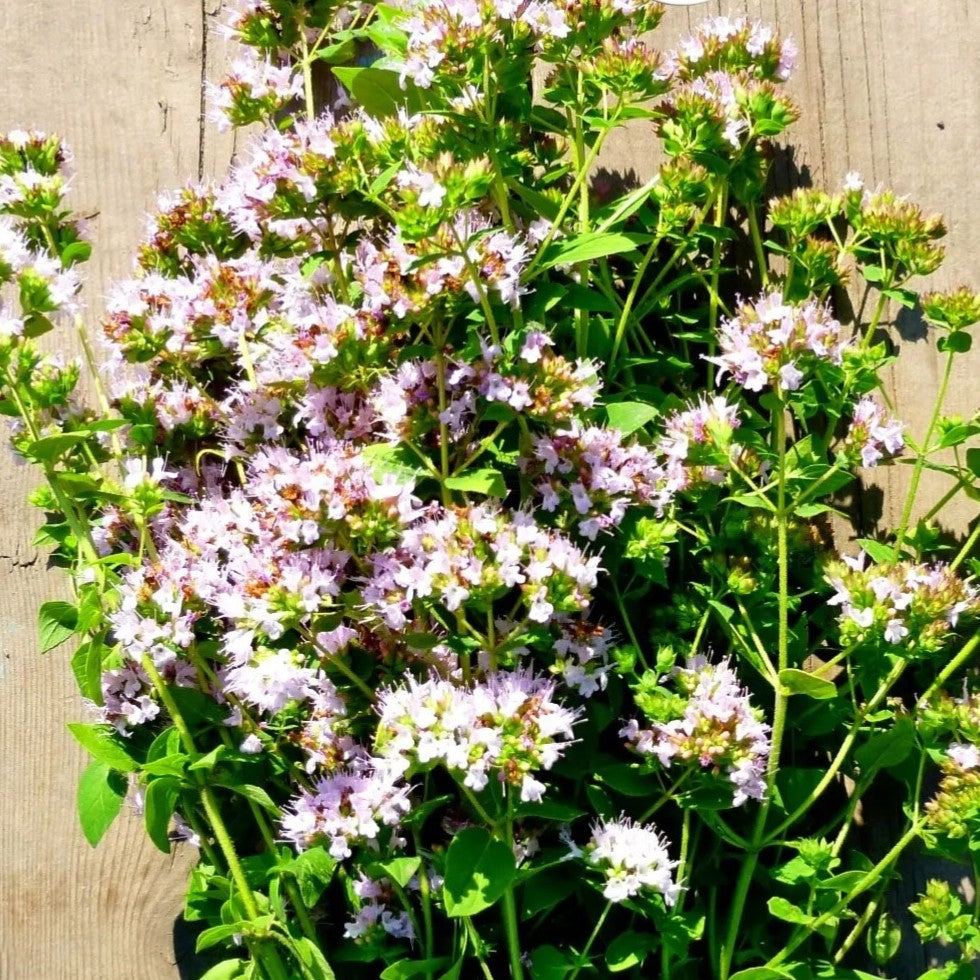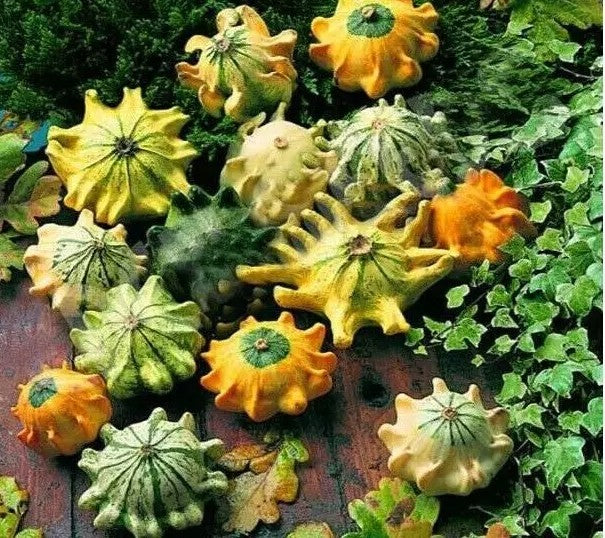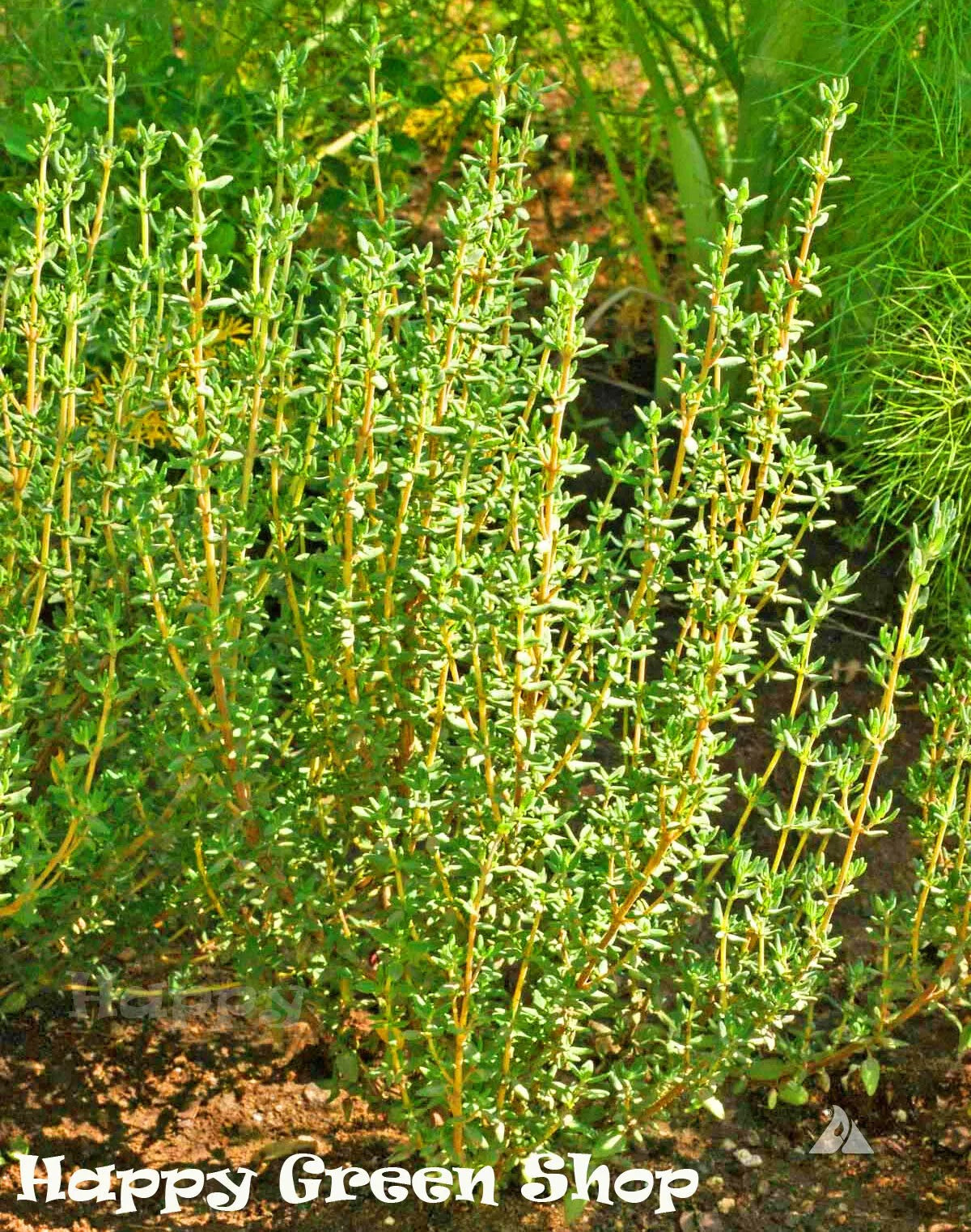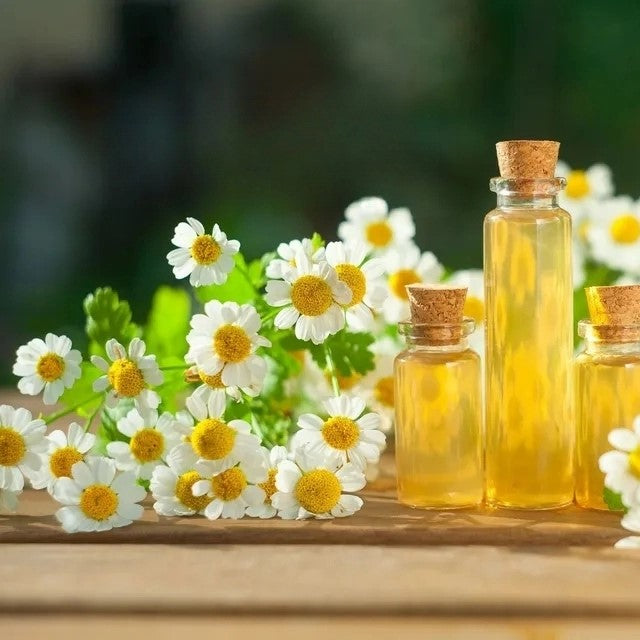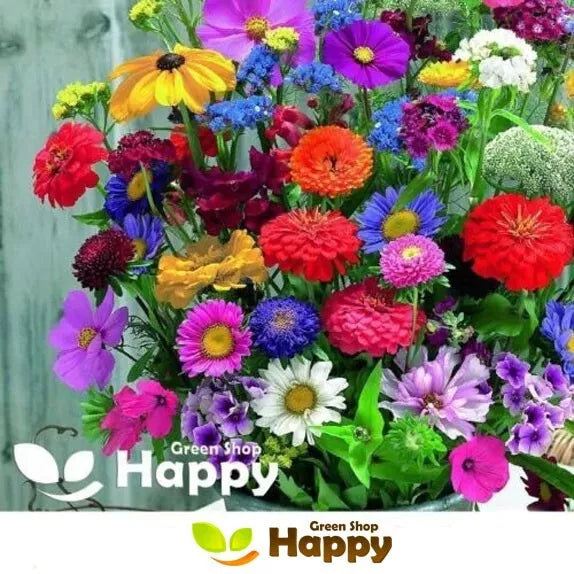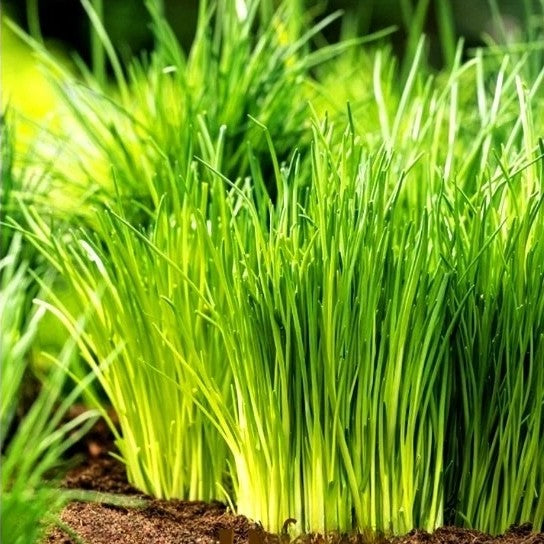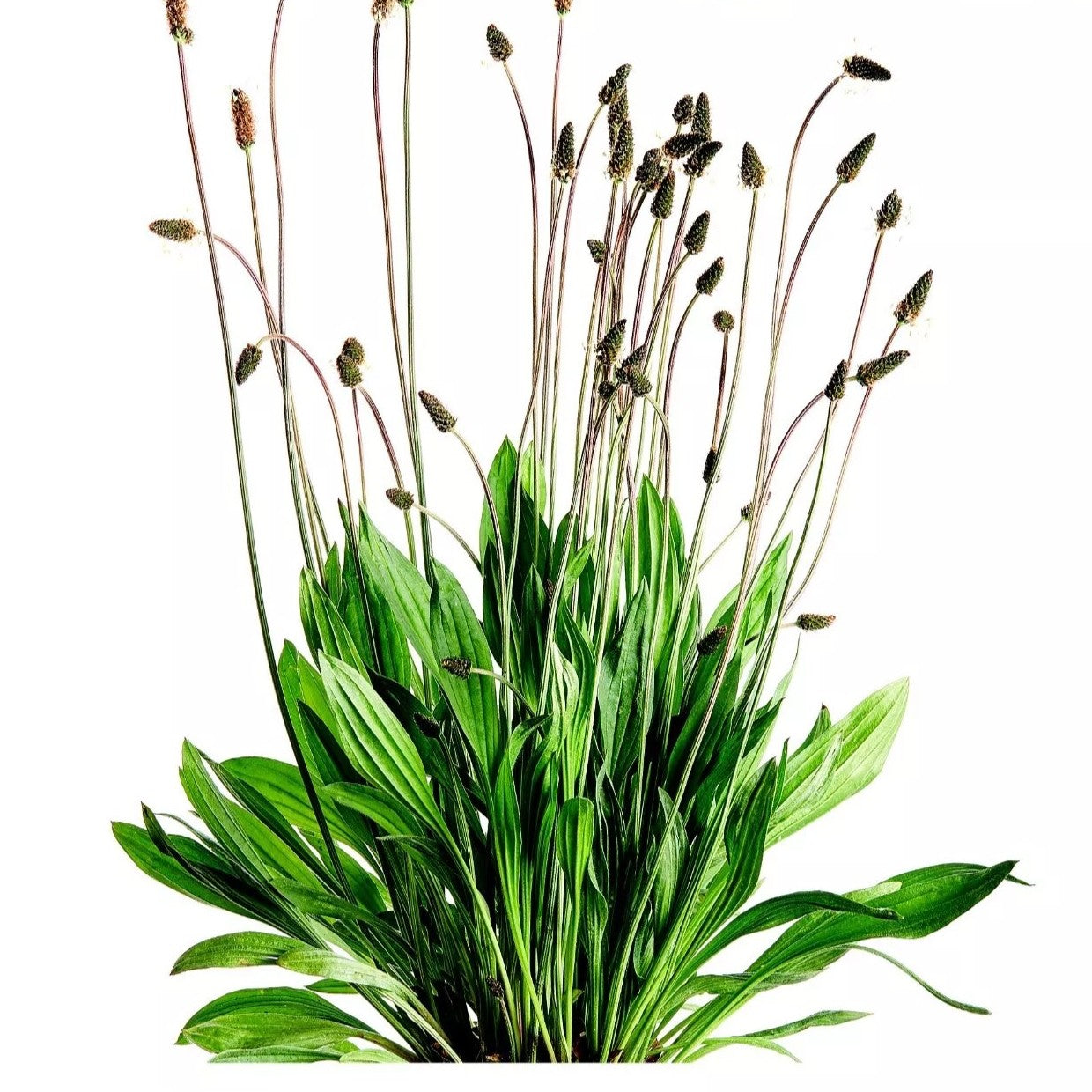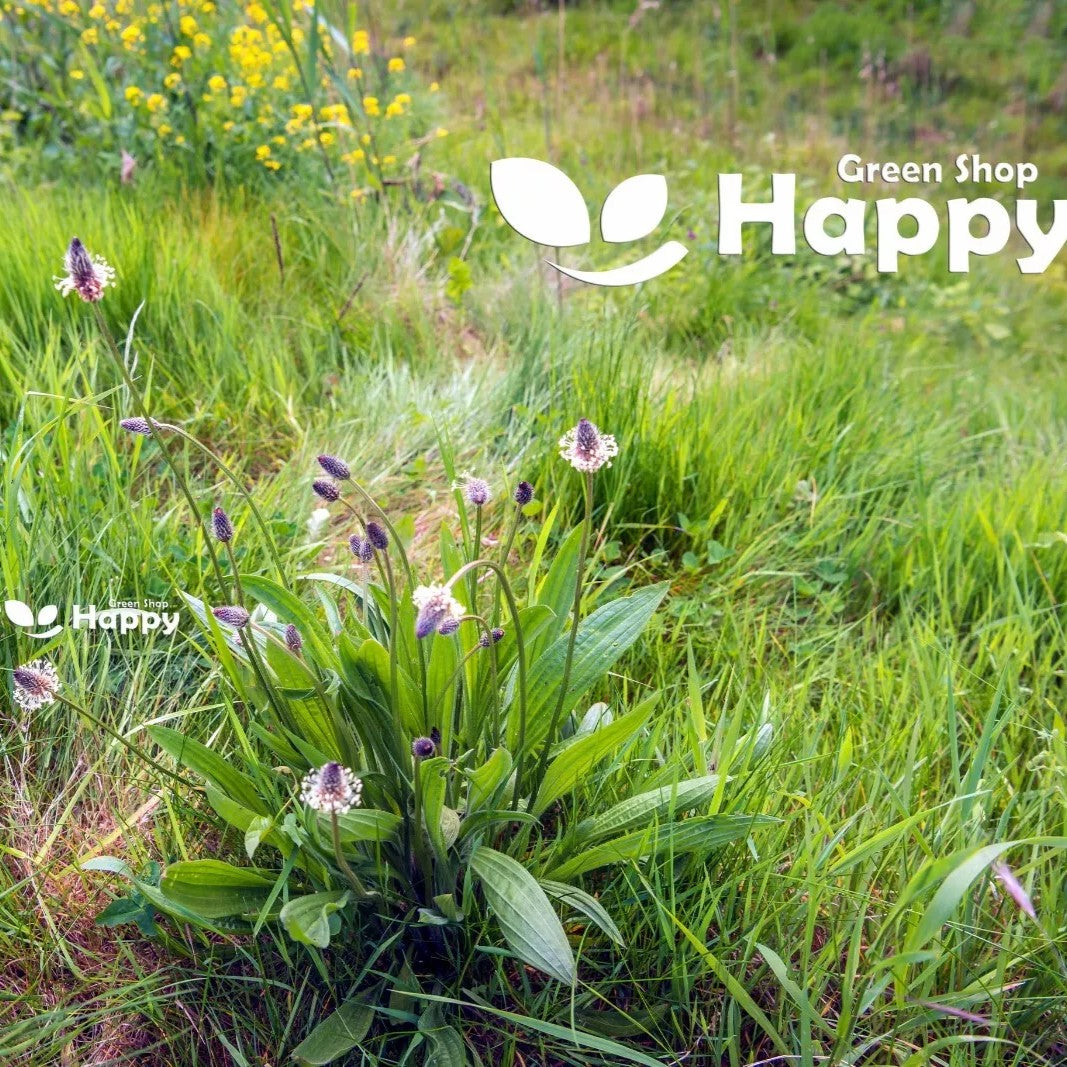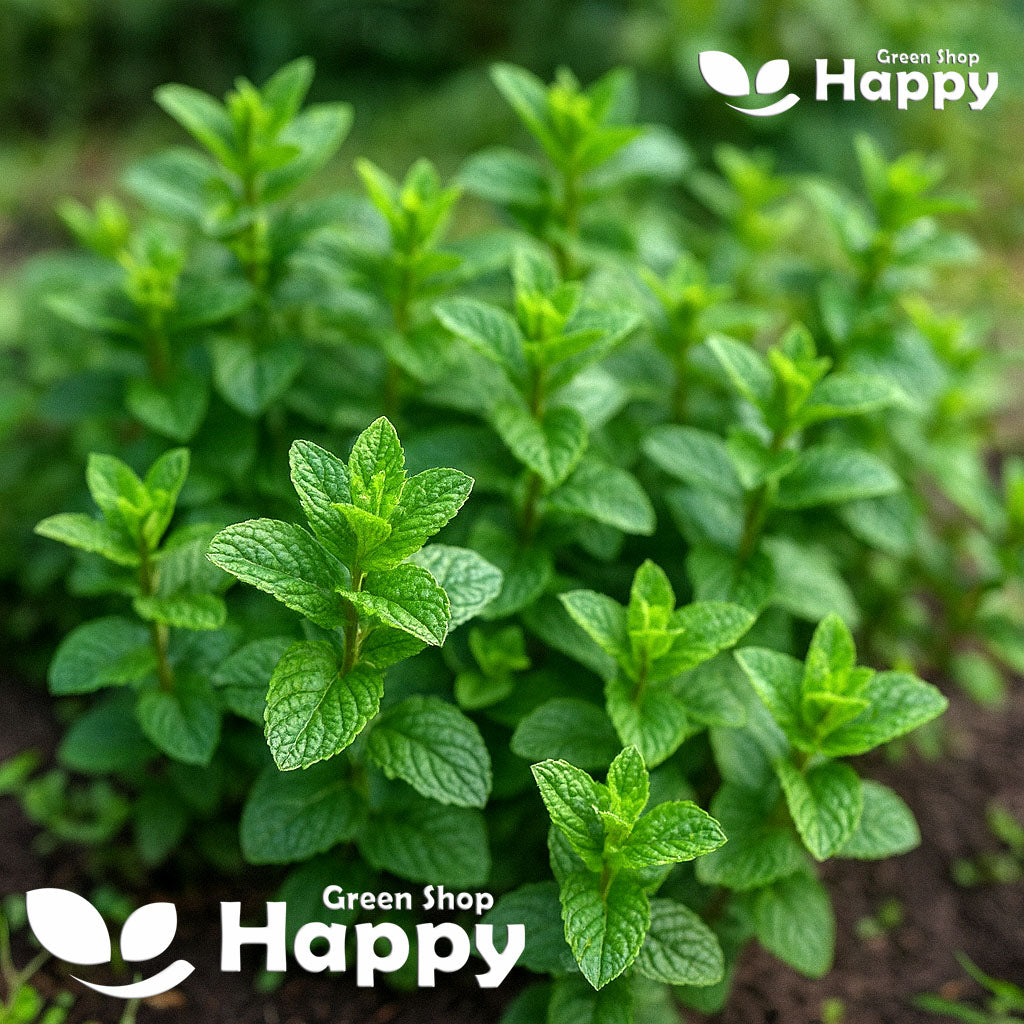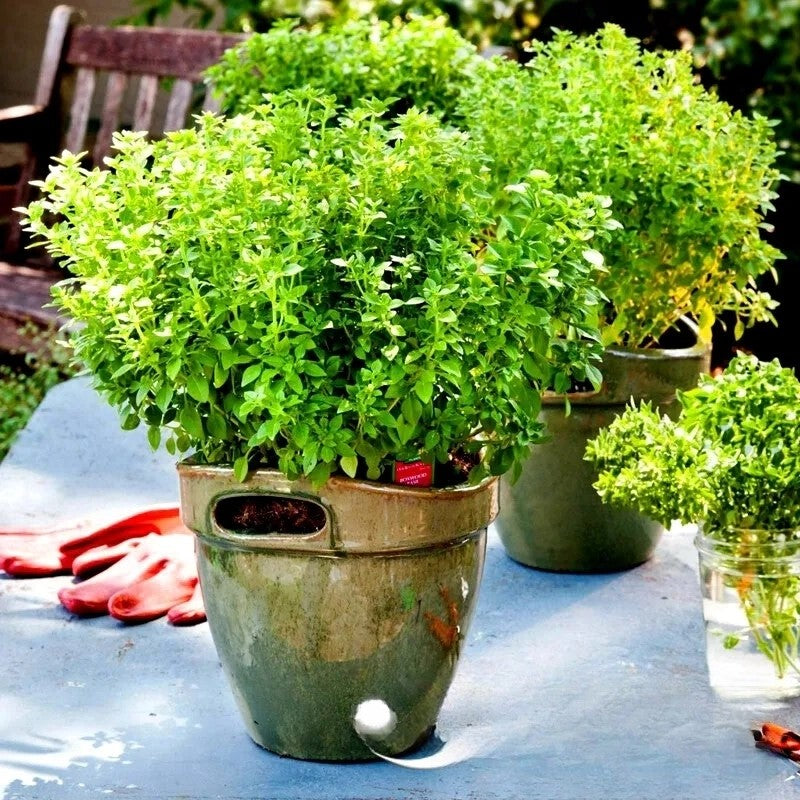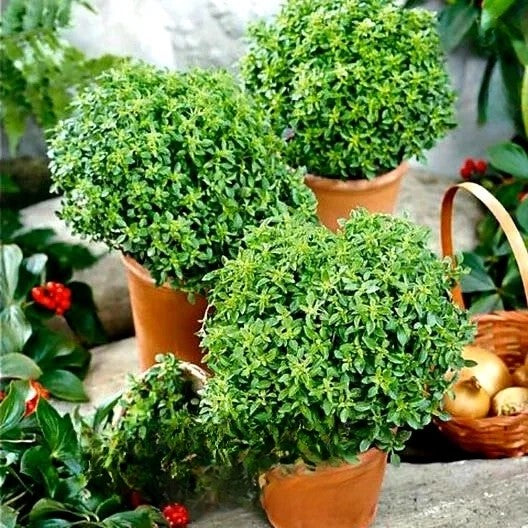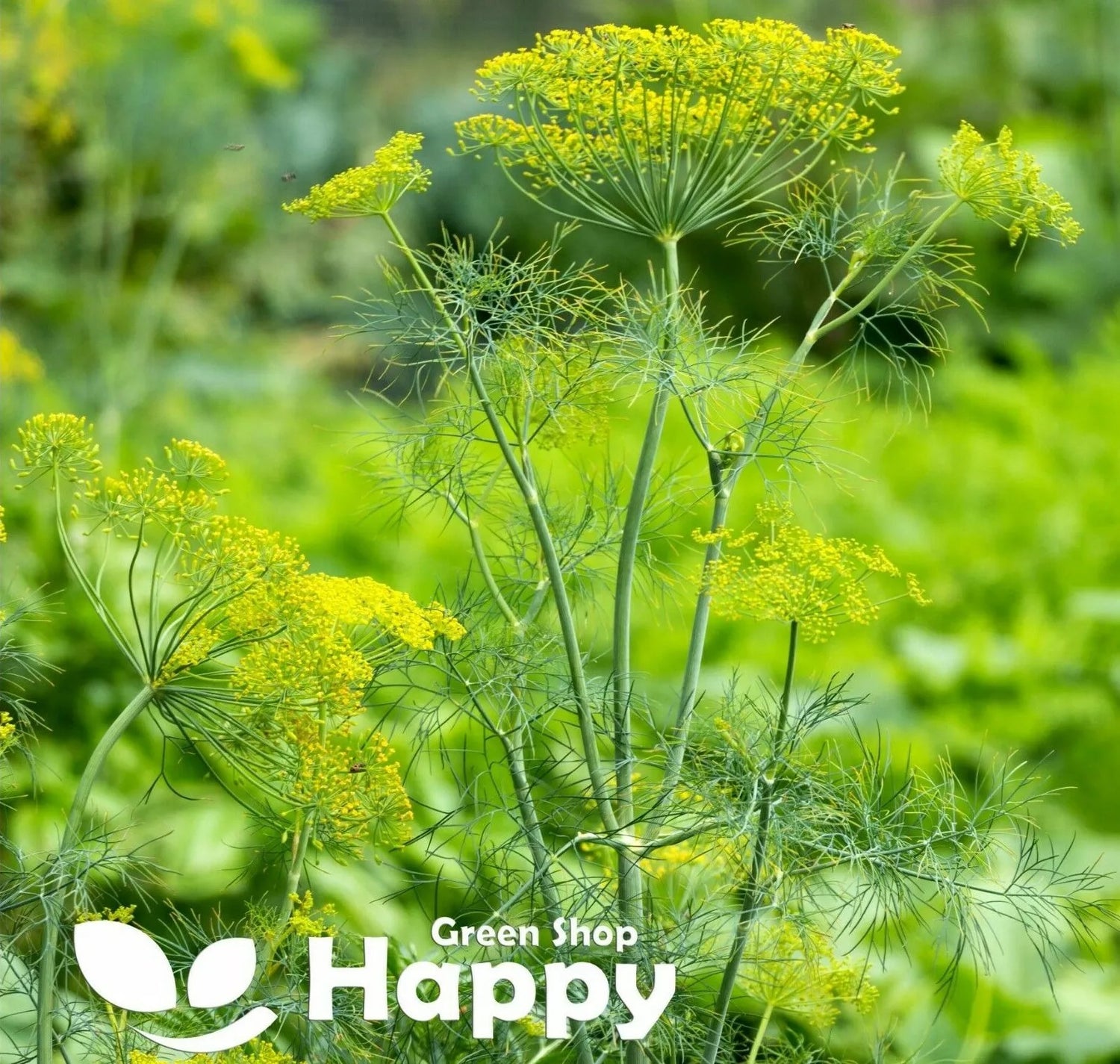Sort by:
68 products
68 products
German Chamomile – Seeds (Matricaria recutita)
Bring calm and fragrance to your garden with German Chamomile, a charming annual herb prized for its daisy-like white flowers and soothing aroma. Traditionally used for herbal teas and natural remedies, this variety is easy to grow, highly productive, and also attracts pollinators to your garden. A perfect choice for herb beds, borders, and pots.
How to Grow
. Sow indoors from February to April, lightly pressing seeds onto the surface of moist compost – do not cover as they need light to germinate
. Transplant seedlings outdoors after the last frost, spacing 20–25 cm apart
. Alternatively, sow outdoors directly in April to May in well-drained soil
. Prefers a sunny position with average to light soil
. Water sparingly, as chamomile thrives in slightly dry conditions
Key Features
. Delicate white blooms with yellow centers
. Traditional herb for calming teas and remedies
. Attracts bees, butterflies, and beneficial insects
. Easy to grow, tolerant of poor soils
. Ideal for borders, herb gardens, and containers
Ideal For
. Herbal tea lovers and home remedies
. Pollinator-friendly gardens
. Cottage gardens and borders
. Container growing
Sowing & Harvest
. Sow: February – May
. Harvest: June – September
Quick Tip
Harvest flowers on warm, dry days and dry them for homemade chamomile tea with the best flavor and aroma.
Garlic Chives – Seeds (Allium tuberosum)
Garlic Chives are a hardy perennial herb prized for their mild garlic flavor and tender, flat green leaves. Perfect for enhancing salads, soups, stir-fries, and garnishes, these chives bring a fresh, aromatic touch to any dish.
Easy to grow and low maintenance, Garlic Chives thrive in garden beds, containers, or raised planters. They are also tolerant of colder climates and will return year after year with minimal care.
How to Grow
-
Sow indoors: February – April
-
Sow outdoors: March – May
-
Plant spacing: 20–25 cm between plants
-
Position: Full sun to partial shade
-
Soil: Fertile, well-drained soil enriched with compost
-
Care: Keep soil consistently moist; trim regularly to encourage fresh growth
Key Features
-
Hardy perennial with tender, flat green leaves
-
Mild garlic flavor ideal for salads, soups, stir-fries, and garnishes
-
Easy to grow and low maintenance
-
Suitable for garden beds, containers, or raised planters
-
Returns year after year with minimal care
Harvest
-
Harvesting period: 60–90 days after sowing
-
Snip leaves as needed; regular harvesting promotes continuous growth.
Short Tip
Trim regularly to prevent flowering and maintain tender, flavorful leaves throughout the season.
Fragrant Flowers Mix – 1g
The Fragrant Flowers Mix is a carefully selected blend of annuals and perennials chosen for their delightful scents and beautiful blooms. From sweet peas and stocks to aromatic herbs and cottage garden favorites, this mix fills your garden with fragrance from early summer to autumn. Perfect for borders, beds, and containers, it also provides excellent cut flowers to enjoy indoors. Easy to grow and pollinator-friendly, this mix combines beauty, scent, and biodiversity in one packet.
Why Grow "Fragrant Flowers Mix"
-
A blend of scented annuals and perennials
-
Long season of blooms with sweet fragrance
-
Great for cut flowers and bouquets
-
Attracts bees, butterflies, and pollinators
Key Features
-
Type: Annuals & perennials mix
-
Packet: 1 g (sufficient for a generous area)
-
Flowering: Summer to autumn
-
Position: Full sun to partial shade
-
Uses: Borders, containers, cut flowers, pollinator gardens
Ideal For
-
Adding fragrance to garden paths and seating areas
-
Cottage and wildflower-style planting
-
Pollinator-friendly gardens
-
Cut flower arrangements
Sowing & Growing
-
Sow outdoors: March–May directly in soil
-
Germination: 14–28 days depending on species
-
Thin seedlings as required for strong growth
-
Prefers well-drained soil in a sunny position
-
Water regularly until established
Fine Leaved Chives Seeds (Allium schoenoprasum)
Add fresh, mild onion flavor to your dishes with Fine Leaved Chives, a classic herb with slender, dark green leaves and delicate edible flowers. Ideal for salads, soups, sauces, and garnishes, this perennial herb is easy to grow and provides harvests year after year. Its compact growth habit makes it perfect for garden beds, borders, and containers.
How to Grow
-
Sow indoors 6–8 weeks before the last frost or directly outdoors in spring.
-
Prefers fertile, well-drained soil in full sun or light shade.
-
Sow seeds 0.5 cm deep in rows 20–25 cm apart.
-
Thin seedlings to 15 cm apart.
-
Harvest leaves regularly to encourage bushy growth.
Key Features
-
Perennial herb with fine, slender leaves
-
Mild, fresh onion flavor for culinary use
-
Compact and easy to grow in beds or containers
-
Long-lasting harvest year after year
-
Attractive edible purple flowers
Ideal For
-
Fresh salads, soups, sauces, and garnishes
-
Container and herb gardens
-
Gardeners seeking perennial, low-maintenance herbs
-
Adding flavor and ornamental interest to beds
Sowing
-
Best time: Early spring indoors or direct sow outdoors
-
Depth: 0.5 cm
-
Row spacing: 20–25 cm
-
Plant spacing: Thin to 15 cm apart
-
Harvest: From 8–10 weeks after sowing
Quick Tip
-
Trim leaves regularly to promote fresh, tender growth and prevent flowering if desired.
English Plantain – Seeds (Plantago lanceolata)
English Plantain is a hardy perennial herb valued for its medicinal properties and ecological benefits. Known for its narrow, lance-shaped leaves, it is often used in herbal remedies, teas, and natural skincare preparations. English Plantain is also a beneficial plant for pollinators and soil health, making it perfect for ecological or medicinal gardens.
This low-maintenance plant thrives in a variety of soils and conditions, returning year after year with minimal care.
How to Grow
-
Sow outdoors: March – May
-
Plant spacing: 20–25 cm between plants
-
Position: Full sun to partial shade
-
Soil: Well-drained, moderately fertile soil
-
Care: Minimal maintenance; water during dry periods; remove weeds to prevent competition
Key Features
-
Hardy perennial with lance-shaped leaves
-
Medicinal uses for teas, herbal remedies, and skincare
-
Low-maintenance and drought-tolerant
-
Supports pollinators and improves soil health
-
Suitable for ecological, medicinal, or wildflower gardens
Harvest
-
Harvesting period: 60–90 days after sowing
-
Leaves can be harvested as needed; best used when young and tender.
Short Tip
Sow in well-drained soil and allow natural self-seeding to create a sustainable, low-maintenance plant patch.
Dwarf Spearmint – Seeds (Mentha spicata)
The Dwarf Spearmint is a compact and aromatic herb, prized for its refreshing flavor and versatility. With its smaller, bushy growth habit, it’s perfect for container gardening, herb borders, and kitchen windowsills. Its bright green leaves bring a cool, sweet taste to teas, salads, desserts, and savory dishes, while also offering natural health benefits.
How to Grow
-
Sow seeds indoors in early spring or directly outdoors after frost.
-
Scatter seeds thinly on the surface of moist soil and lightly press down.
-
Keep in a sunny to partly shaded spot with regular watering.
-
Harvest young leaves as needed to encourage fresh growth.
Key Features
-
Compact, bushy spearmint variety
-
Refreshing sweet-mint flavor
-
Excellent for containers, windowsills, and small spaces
-
Perennial herb with continuous harvests
-
Culinary and medicinal uses
Ideal For
-
Fresh teas, cocktails, and infused water
-
Salads, sauces, and desserts
-
Small gardens, pots, and indoor growing
Sowing & Harvest
-
Sow: March to June
-
Harvest: May onwards, throughout the season
Quick Tip
-
Regular trimming keeps plants compact and prevents them from spreading too aggressively.
Dwarf Parsley 'Moss Curled 2' Seeds (Petroselinum crispum)
Enhance your garden and kitchen with Dwarf Parsley 'Moss Curled 2', a compact, slow-growing variety producing dense, bright green, finely curled leaves. Ideal for both ornamental and culinary use, its vibrant foliage adds texture to salads, garnishes, and cooked dishes. Perfect for containers, herb beds, and borders, it’s a versatile herb for every gardener.
How to Grow
-
Sow indoors in early spring or directly outdoors after frost.
-
Use fertile, well-drained soil in sun or partial shade.
-
Sow seeds 0.5 cm deep in rows 20–25 cm apart.
-
Thin seedlings to 15–20 cm apart for strong growth.
-
Harvest leaves regularly to encourage bushiness.
Key Features
-
Dwarf, slow-growing parsley with finely curled, bright green leaves
-
Dual-purpose: culinary use and ornamental appeal
-
Compact size suitable for containers and small gardens
-
Long cutting period for continuous harvest
-
Easy to grow for beginners and experienced gardeners
Ideal For
-
Fresh salads, garnishes, and cooked dishes
-
Container gardens, herb beds, and borders
-
Gardeners seeking compact, productive herbs
-
Year-round kitchen harvest
Sowing
-
Best time: Spring or early summer
-
Depth: 0.5 cm
-
Row spacing: 20–25 cm
-
Plant spacing: Thin to 15–20 cm apart
-
Position: Sun or partial shade, fertile soil
Quick Tip
-
Pinch outer leaves regularly to encourage bushier growth and longer harvests.
Dwarf Minette Greek Basil – 500 Seeds (Ocimum basilicum)
Dwarf Minette Greek Basil is a compact, aromatic basil variety prized for its small, flavorful leaves and strong fragrance. Ideal for Mediterranean cooking, pesto, salads, and garnishes, this basil brings a fresh, aromatic touch to every dish.
Its dwarf habit makes it perfect for garden beds, containers, or windowsills. Easy to grow and fast-maturing, Dwarf Minette Greek Basil provides a steady harvest throughout the growing season.
How to Grow
-
Sow indoors: February – April
-
Sow outdoors: After last frost, spacing 20–25 cm apart
-
Position: Full sun
-
Soil: Fertile, well-drained soil enriched with compost
-
Care: Water moderately; pinch back tips to encourage bushy growth
Key Features
-
Compact dwarf variety with small, flavorful leaves
-
Strong aromatic flavor ideal for Mediterranean dishes, pesto, salads, and garnishes
-
Fast-growing and easy to maintain
-
Suitable for garden beds, containers, or windowsills
-
Continuous harvest when trimmed regularly
Harvest
-
Harvesting period: 60–75 days after sowing
-
Pick leaves regularly to promote new growth and maintain flavor.
Short Tip
Pinch back the growing tips regularly to encourage bushy plants and maximize leaf production.
Dill Seeds (Anethum graveolens)
Bring fresh flavor and fragrance to your garden with Dill, a versatile culinary and medicinal herb. Known for its delicate feathery foliage and aromatic seeds, dill is a must-have for seasoning fish, soups, pickles, and salads. Easy to grow and quick to mature, it also attracts beneficial pollinators, making it a perfect addition to herb beds and kitchen gardens.
How to Grow
-
Sow directly outdoors from spring to early summer.
-
Prefers light, well-drained soil in full sun.
-
Sow thinly, 0.5–1 cm deep in rows 30 cm apart.
-
Thin seedlings to 15 cm spacing.
-
Avoid transplanting as dill dislikes root disturbance.
Key Features
-
Aromatic herb with feathery foliage and seeds
-
Delicious for seasoning fish, soups, salads, and pickles
-
Quick-growing and easy for beginners
-
Attracts bees and beneficial insects
-
Dual use: fresh leaves and dried seeds
Ideal For
-
Home cooking and herbal tea
-
Pickling and preserving vegetables
-
Companion planting in the garden
-
Attracting pollinators and beneficial insects
Sowing
-
Best time: March to June
-
Depth: 0.5–1 cm
-
Row spacing: 30 cm
-
Plant spacing: 15 cm after thinning
-
Harvest: Leaves in 6–8 weeks, seeds later in the season
Quick Tip
-
For a continuous supply, sow dill little and often every 2–3 weeks through the summer.
Showing 54/68



